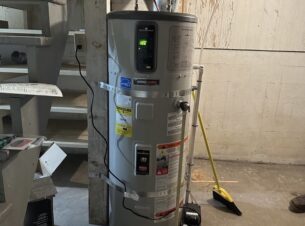Nonresidential Building, Multifamily Housing Retreat After March Gains
New York — The value of new construction starts in April fell 8% from the previous month to a seasonally adjusted annual rate of $608.3 billion, according to Dodge Data & Analytics. Nonresidential building pulled back following its sharp March increase, and residential building also declined due to a slower pace for multifamily housing. Meanwhile, the nonbuilding construction sector showed improvement, with public works strengthening after its lackluster March performance. Through the first four months of 2016, total construction starts on an unadjusted basis were reported at $198.4 billion, down 12% from the same month a year ago. The first four months of 2015 had been lifted by several exceptionally large projects, including three liquefied natural gas (LNG) terminals with a total value of $15.4 billion and three large petrochemical plants with a total value of $11.9 billion, which substantially increased last year’s January-April amounts for the electric utility/gas plant and manufacturing building categories. If the electric utility/gas plant and manufacturing building categories are excluded, total construction starts during the first four months of 2016 would be down a modest 4% from a year ago.
April’s data lowered the Dodge Index to 129 (2000=100), compared to 140 for March. The Dodge Index had registered improved activity during February and March, averaging 141. April’s decline returned the pace of construction starts to what was reported during the July 2015-January 2016 period, when the Dodge Index averaged 129. “The construction start statistics on a month-to-month basis are subject to frequent ups-and-downs, so April’s decline after two months of improved activity was not a surprise,” stated Robert A. Murray, chief economist for Dodge Data & Analytics. “The elevated volume for nonresidential building in March was not expected to be sustained in the near term, yet the strength shown by its institutional segment in March does provide an indication of where growth is likely to come over the course of 2016. The prospects for the commercial segment of nonresidential building, while still positive, have grown more tenuous given signs that banks are beginning to take a more cautious approach towards commercial real estate loans. Residential building is still deriving some benefit from this year’s low interest rate environment, and increased funding under the new federal transportation act should provide support for the public works sector.”
Nonresidential building in April dropped 19% to $185.1 billion (annual rate). This follows the 26% hike reported for March, which included the start of several large transportation terminal projects plus several large hotel and casino projects. The institutional side of the nonresidential building market fell 24% in April after surging 50% in March, with widespread declines for its individual structure types. Most notable was an 86% plunge for the transportation terminal category, which had been lifted in March by $663 million for work on the rail terminal caverns at Grand Central Terminal in New York NY and $537 million for the new North Terminal building at Louis Armstrong International Airport in New Orleans LA. By contrast, the largest transportation terminal project reported as an April start was a $17 million rail station platform replacement in Wantagh NY. Healthcare facilities in April dropped 10% after soaring 57% in March, while the public buildings category retreated 16% after its 48% March rise. Even with its decline, the healthcare facilities category in April did see the start of several large projects, including a $275 million medical center expansion in Tucson AZ and a $180 million psychiatric center in Staten Island NY. The amusement category settled back 8% in April, after climbing 39% in March with the push coming from the $284 million casino portion of the Montreign Resort and Casino in Kiamesha Lake NY. There were still several large amusement projects that were entered as April construction starts, including two Star Wars-themed park expansions valued each at $135 million, located at Disneyland in Anaheim CA and Walt Disney World in Orlando FL. Educational facilities, the largest institutional category, had a relatively small 3% drop in April after climbing 21% in March. Major educational facilities projects reported as April starts were a $134 million high school in Spring TX and a $98 million middle school in Beverly MA. The depressed religious building category ran counter to the broad pullback for institutional building, as it climbed 10% in April.
The commercial building categories as a group fell 18% in April, following a 5% gain in March. Hotel construction dropped 49% after its 47% March jump, which reflected the $332 million hotel portion of the Montreign Hotel and Casino. The largest hotel project entered as an April start was an $87 million hotel in Washington DC. Store construction in April decreased 17%, reversing its 17% March gain. On the plus side, growth was reported in April for warehouses, up 15%; and office buildings, up 8%. Large office projects that reached groundbreaking in April were the $232 million addition to the Fannie Mae office building in Washington DC, the $223 million CNA Financial headquarters office tower in Chicago IL, and the $200 million NCR headquarters office building in Atlanta GA. The manufacturing plant category in April rose 19%, supported by the $717 million expansion to an alpha olefins plant in Louisiana.
Residential building, at $269.1 billion (annual rate), slipped 8% in April. The weaker activity was due to a slower pace for multifamily housing, which declined 26% after advancing 14% in March. There were five multifamily projects valued at $100 or more that were entered as April starts, compared to 12 such projects in March. The largest multifamily project in April was a $316 million apartment building in New York NY, followed by a $300 million residential tower in San Francisco CA, a $231 million apartment complex in Denver CO, a $152 million apartment building in Honolulu HI, and a $100 million apartment building in West Orange NJ. Through the first four months of 2016, the top five multifamily metropolitan markets in terms of the dollar amount of multifamily starts were led by New York NY, followed by Miami FL, Boston MA, San Francisco CA, and Los Angeles CA. The New York metropolitan area’s share of the national multifamily dollar amount during this year’s January-April period was 24%, still very high by historical standards although down slightly from the 26% share reported for the full year 2015. Single family housing in April was unchanged from March, maintaining the essentially flat pattern that’s been present for at least the past nine months. By major region, single family housing in April showed a 5% increase in the South Atlantic, but slight declines were reported in the South Central and Northeast, each down 1%; and the Midwest and West, each down 2%.
Nonbuilding construction in March advanced 10% to $154.1 billion (annual rate), with public works up 39% while electric utilities/gas plants fell 36%. Highway and bridge construction climbed 13% following subdued activity in March, lifted by the April start of the $581 million Bergstrom Expressway project in Austin TX and the $209 million Interstate 59/20 interchange modifications in Birmingham AL. Through the first four months of 2016, the top five states in terms of the dollar amount of highway and bridge construction starts were the following – Texas, California, North Carolina, Illinois, and Florida. The miscellaneous public works category in April soared 180%, and included two site work projects valued at $365 million each for the Star Wars-themed parks at Disneyland and Walt Disney World. Other large miscellaneous public works projects in April were a $220 million natural gas pipeline in Texas and a $146 million portion of the SunRail Commuter Rail Transit project in Orlando FL. With regard to environmental public works, water supply construction surged 85% in April, reflecting the start of a $707 million water tunnel repair project located in New York’s Dutchess, Orange, and Putnam counties. The other two environmental public works categories, river/harbor development and sewer construction, each fell 24% in April. The 36% decline for the electric power/gas plant category in April continued its retreat from a very strong amount at the outset of 2016. Even with the decline, this category still witnessed the April start of several massive projects, including a $780 million natural gas-fired power plant in Pennsylvania, a $613 million wind farm in Kansas, a $550 million wind farm in New Mexico, and a $350 million natural gas-fired power plant in Indiana.
The 12% slide for total construction start on an unadjusted basis during the first four months of 2016 came as the result of sizeable declines for both nonresidential building and nonbuilding construction, relative to their particularly heightened activity a year ago. For both sectors, the year-to-date comparisons should strengthen as 2016 proceeds. Nonresidential building fell 21% in this year’s January-April period, with manufacturing building down 72%, the institutional building segment down 10%, and the commercial building segment down 4%. The first four months of 2015 had been boosted by such projects as the $8.1 billion Sasol ethylene cracker and derivatives complex in Louisiana, the $2.5 billion 30 Hudson Yards office-retail building in New York NY, and the $705 million National Bio and Agro Defense Facility in Manhattan KS. Nonbuilding construction dropped 25% year-to-date, with public works down 23% and electric utilities/gas plants down 28%. The January-April amount for public works in 2015 was lifted by the $2.3 billion Interstate 4 project in Orlando FL while electric utilities/gas plants were lifted by the $15.4 billion for three LNG terminals in the Gulf Coast region. Residential building is the one major sector to show year-to-date growth so far in 2016, rising 8% with single family housing up 8% and multifamily housing up 5%. By major region, total construction starts for the first four months of 2016 revealed these comparisons to last year – the South Central, down 34%; the Midwest, down 7%; the Northeast, down 4%; the South Atlantic, unchanged; and the West, up 2%.
Added perspective is made possible by looking at twelve-month moving totals, in this case the twelve months ending April 2016 versus the twelve months ending April 2015. On this basis, total construction starts are down 3%, due to this performance by major sector – nonresidential building, down 17%; residential building, up 12%; and nonbuilding construction, down 7%.




Join the conversation: